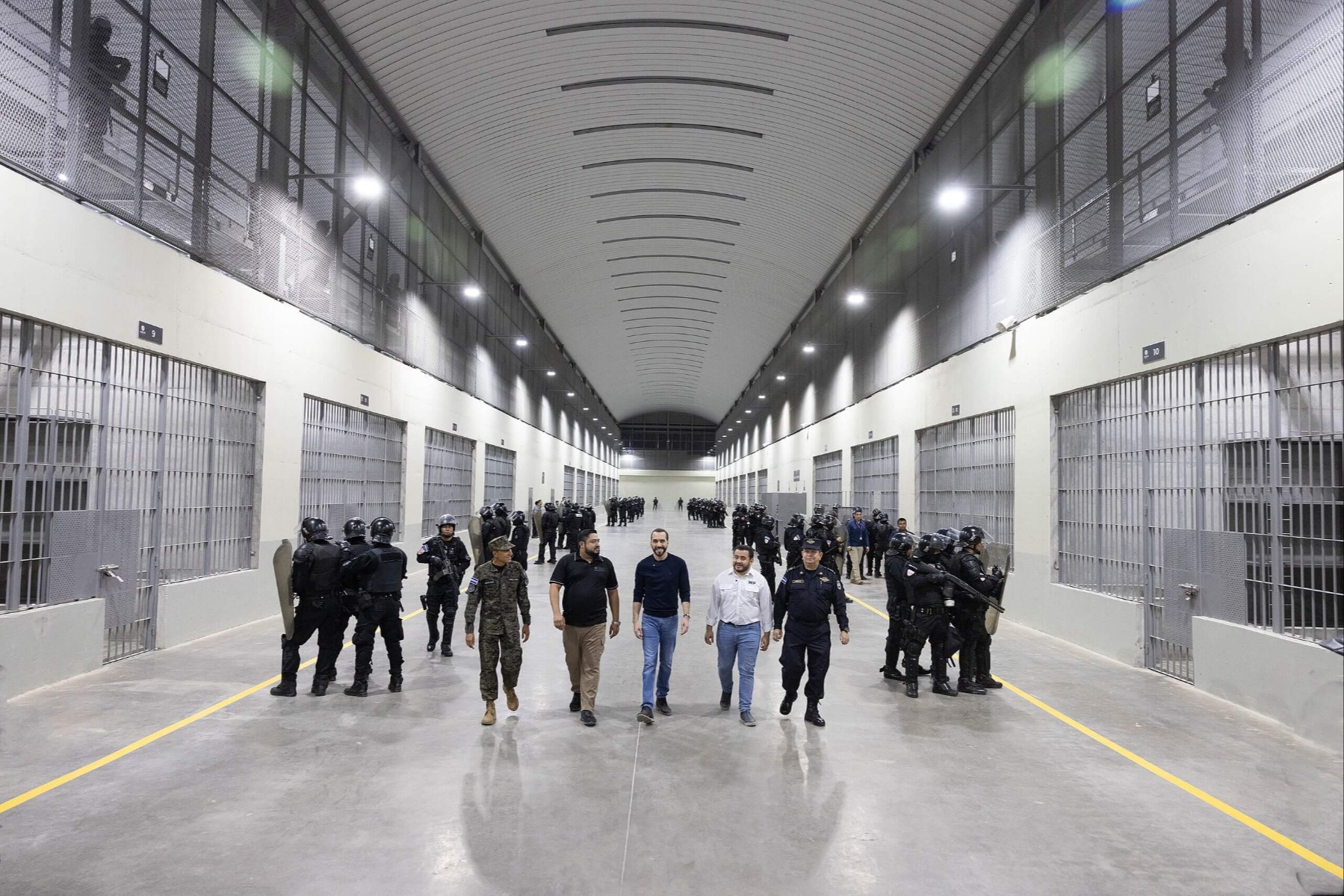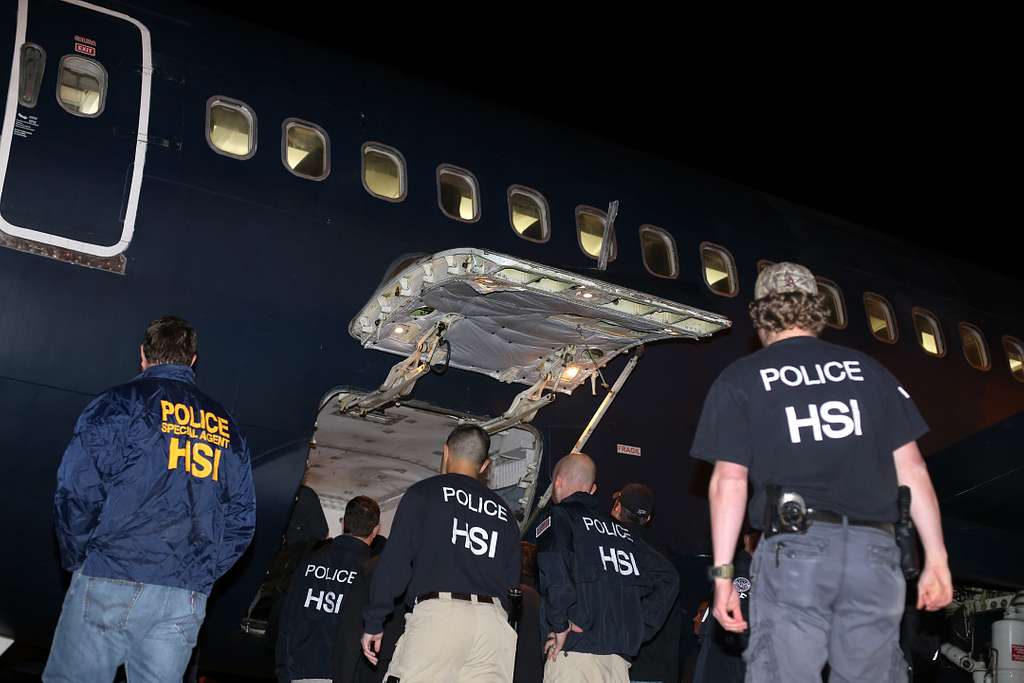The Situation: Contracting Detention to a Lawless State
What law lets the Trump administration store Venezuelans in Salvadoran prisons?

Published by The Lawfare Institute
in Cooperation With

The Situation on Friday surfaced 20 questions posed by the quickly proliferating El Salvador deportation cases.
Today, I want to focus on a single question that the courts haven’t yet confronted squarely but that lies underneath the lawlessness of this entire enterprise: By what legal authority can the United States send Venezuelans to El Salvador for indefinite detention?
The question has been bugging me since the story of the March 15 El Salvador flights first broke. But it has been understandably sublimated beneath the horror at the specific prison to which people have been sent, the procedural derangement of the Trump administration’s conduct, the erroneous inclusion of Kilmar Abrego Garcia among the transferees, and the administration’s defiance of court orders in multiple cases connected to the flights.
So let’s zero in on this question specifically.
The Trump administration has undoubted authority to deport people who are illegally in this country, though the specific manner in which it did so here seems very likely to violate the law.
It also has undoubted authority to extradite to El Salvador Venezuelan citizens who are wanted in El Salvador for specified crimes.
And I don’t doubt either that the Trump administration normally has the power to deport Venezuelans to El Salvador—assuming that El Salvador is willing to take them and the detainee has no expectation of torture there—and that El Salvador then has its own sovereign power to prosecute those people or to just lock them up summarily if it chooses to do so.
But the current arrangements do not reflect any of these processes. The people the administration has deported from the United States do not appear to be the subject of any Salvadoran criminal process or other detention authority. Their deportations—from everything I can discern—appear to have been specifically for the purpose of their detention by Salvadoran authorities. Indeed, critically, the Trump administration is actively paying the government of El Salvador to keep them locked up.
All of which raises the question: By what authority can the U.S. government pay a foreign government to lock up for the long term people who were detained in the United States on the basis of no allegation of criminal misconduct?
On the surface, this question seems to harken back to war on terrorism cases. But the differences here are ultimately more important than the similarities. During the war on terror, the U.S. military transferred large numbers of detainees to the custody of foreign governments. Mostly, these transfers involved transfers to the detainees’ home countries and involved ultimately freeing them—turning over Afghans to Afghanistan’s government or Iraqis to the Iraqi government. But particularly with detainees at Guantanamo Bay, it sometimes also involved third-party countries and the continued detention of those transferred from U.S. custody. Most relevant for present purposes are the transfers from Guantanamo Bay of Yemeni detainees to a Saudi detention and rehabilitation program. This is the closest analog I can think of to transferring Venezuelan detainees to Salvadoran custody. The stated rationale, that the home country state is too dysfunctional to meaningfully take responsibility for the detainees, is superficially similar, at least.
There are also the cases of CIA detainees “rendered” to partner governments, often for strategic interrogation—which in practical terms meant torture—and long-term detention. Again, mostly this involved sending detainees to the tender mercies of their home countries, but there are at least several cases that involved third-party countries.
Hence, the Trump administration might argue that in sending Venezuelans to a Salvadoran dungeon, it is not doing anything that prior administrations didn’t also do—which is to say sending detainees to third-party countries with farcical judicial systems for long-term storage.
But as I say, the similarities turn out to be superficial, while the differences are profound—and consequential.
Let’s start with the fact that the war on terror was conducted under a clear congressional mandate, which—at least for the military detainees—the courts held authorized detentions. As the Supreme Court wrote in 2003: “We conclude that detention of individuals falling into the limited category we are considering, for the duration of the particular conflict in which they were captured, is so fundamental and accepted an incident to war as to be an exercise of the ‘necessary and appropriate force’ Congress has authorized the President to use.”
Remember that these were all detainees captured overseas, and they thus did not have constitutional rights. The transfer of an enemy belligerent to a partner government where the underlying detention itself is authorized by law and the detainee does not have the protection of the Constitution is one thing. It is a very different matter to capture people domestically who do have constitutional rights and whom the United States has no authority to hold (except pursuant to their expected deportations) and then contract their long-term detention to a foreign government pursuant to no known law.
The renditions arguably pose a closer analog. The government conducted these not pursuant to congressional authorization but under parallel presidential findings. They were often brutal. And whether any part of the rendition program can be justified either legally or morally is a matter of legitimate debate—one I will not venture to address here.
But whatever one thinks of the CIA’s renditions, there were important differences between the CIA’s conduct during the war on terror and what Trump is doing now. For one thing, the CIA program took place during a genuine emergency. It was also small. We don’t know how many people passed through the CIA program over the several years of its life, but I would be surprised if it were more than were rendered to El Salvador on March 15 alone. And only a very small number of these people, all of whom were captured abroad, were rendered to third-party governments.
In other words, whatever one thinks of the CIA program and its rendition component, it was not domestic, it involved people the agency genuinely believed (sometimes wrongly, as it turned out) to be important al-Qaeda figures during a period of genuine emergency, and, critically, it did not scale. Picking up suspected terrorists and rendering them to third countries was a piecemeal exercise. It was not an exercise in identifying a large class of people based on broad characteristics—say, being Venezuelan and male and having tattoos—and loading them onto planes. In other words, it could never be the basis of wide-scale detention of people in the United States outside of the bounds of law.
By contrast, what the Trump administration proposes here really could be the basis of a large-scale domestic round-up. Under what appears to be the administration’s legal theory—the parameters of which the administration has never spelled out—any Venezuelan or Salvadoran who is deportable is potentially subject to indefinite detention contracted by the United States from its Salvadoran proxy. This is many hundreds of thousands of people. And it’s not obvious to me that it stops there. Why not deport people from other countries to El Salvador too?
In other words, once one accepts that the administration can pack a planeload of Venezuelans and fly them off for indefinite detention in El Salvador with no clear legal framework under either U.S. or Salvadoran law, one is accepting a mass detention proposition that really does scale.
Fortunately, I suspect this is a question the courts are actually in a decent position to address. Because the Supreme Court has required that proposed deportees under the Alien Enemies Act get reasonable notice of their designations and pending deportations and deportees under normal immigration authorities get other opportunities to contest their deportability, it is only a matter of time before the courts confront the question of what being on one of those flights really means.
Is it really a deportation the government is proposing to effectuate? Or is it a rendition to a lawless foreign state for purposes of detention not authorized by law but secretly contracted by the Trump administration?
While the Supreme Court might feel hamstrung in interfering with U.S. foreign policy once detainees have actually been handed over to Salvadoran custody, the matter is squarely within their jurisdiction before a plane has left. I would hope there are not five justices who will vote for the proposition that the United States government can knowingly and intentionally deport a person to face such lawless imprisonment.
The Situation continues tomorrow.




